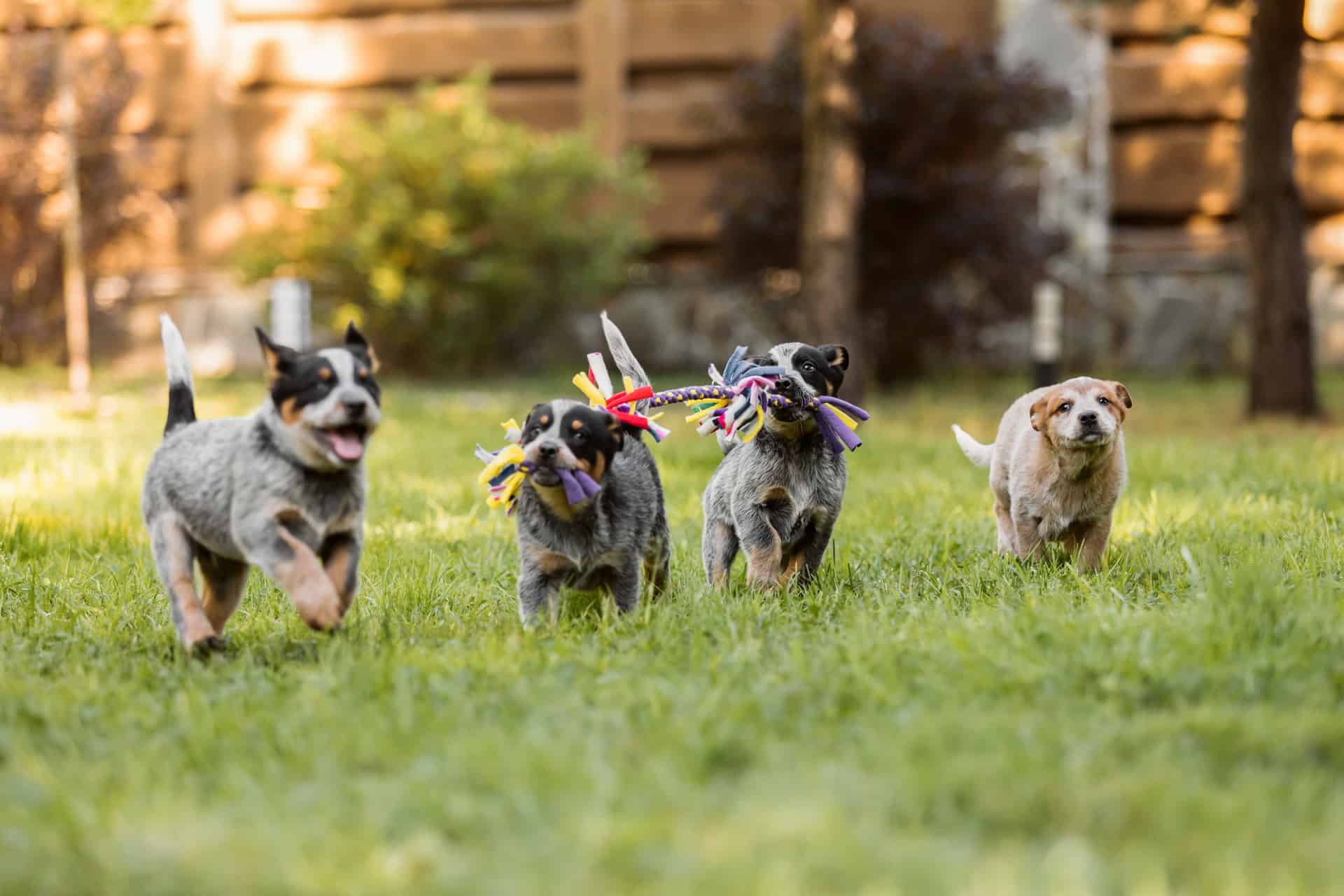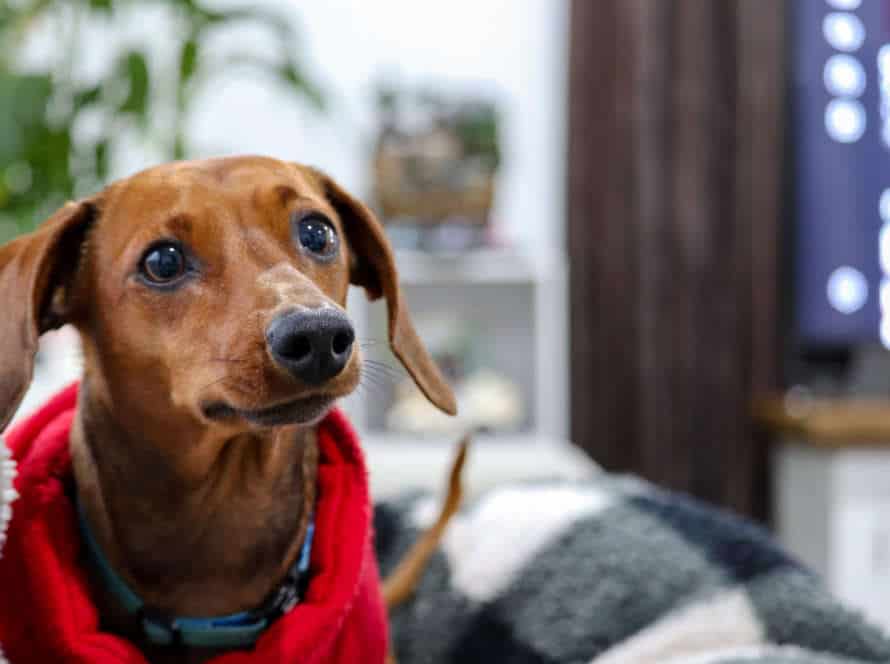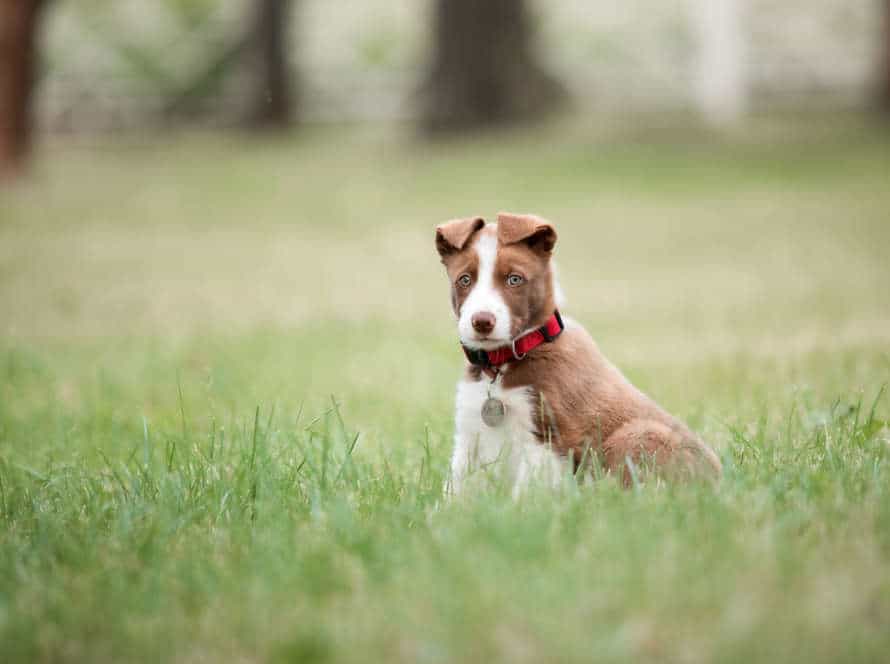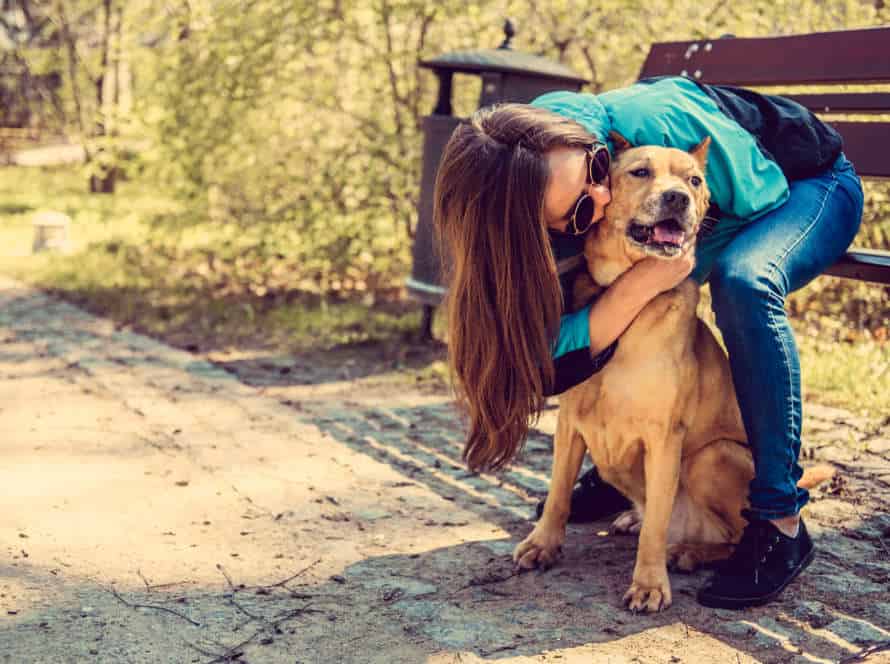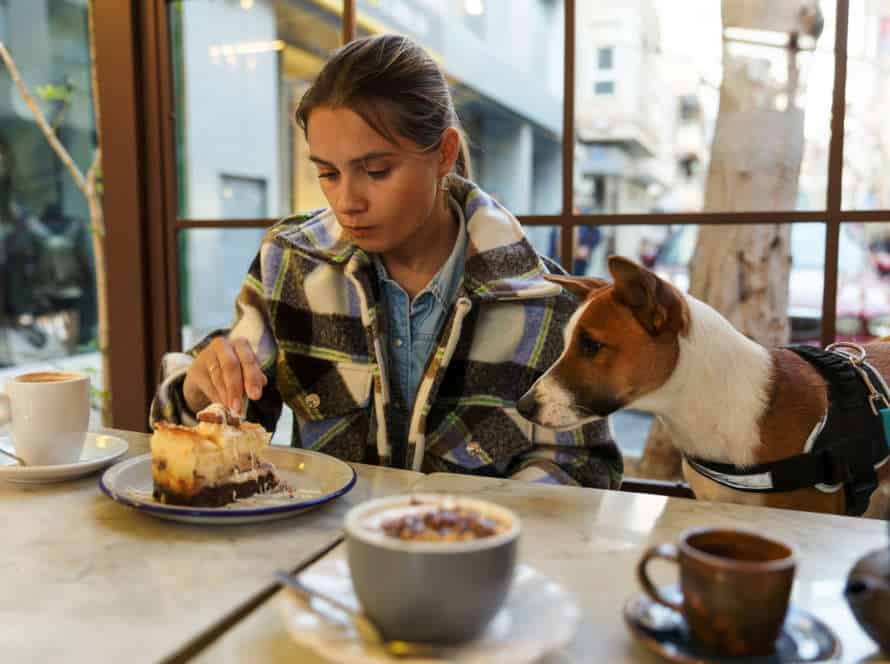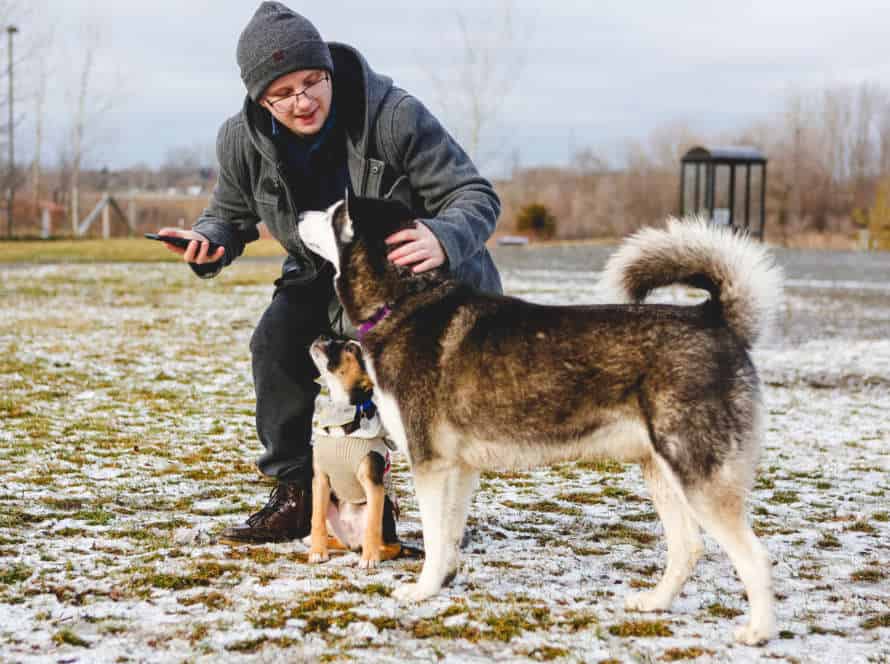Teaching Boundaries to Energetic Puppies
Teaching boundaries to energetic puppies is essential. It prevents them from building bad habits, enabling them to be well-behaved dogs. Here are some tips to help:
- Start with basic commands like “Sit,” “Stay,” and “Leave it.”
- Reward good behavior with treats and positive reinforcement.
- Use a leash to manage your puppy’s movements and re-direct their attention when necessary.
- Set rules and routines that must be followed consistently.
- Limit playtime and physical contact to avoid overstimulation or aggression.
- Be patient and consistent with training – and seek professional help if needed.
By following these tips, you can teach your energetic puppy to respect boundaries and be a happy and well-behaved dog.
Understanding Your Puppy’s Behavior
Puppies are lively, nosy and bursting with energy! Comprehending their behavior can help you guide them to set boundaries for their safety and well-being. Knowing the rudiments of their behavior can assist in comprehending their body language. This article will provide an overview of usual behavior and how to interpret it.
Know the signs of a puppy who lacks boundaries
It’s essential to know the signs of a puppy who lacks boundaries. This can help you understand your pet’s behavior and teach them the necessary boundaries. Here are some signs to look for:
- Nipping & Biting: Puppies explore with their mouth, but if it becomes too much or painful, it is a sign of no boundaries.
- Jumping on People: Puppies jump to greet or get attention. If not corrected, it can be dangerous.
- Excessive Barking/Whining: Puppies bark/whine to communicate needs/wants. But too much of this can show a lack of boundaries.
- Destroying Items: Puppies explore by chewing, but too much destruction means they need boundary teaching.
By recognizing these signs, you can act when your pet needs to be corrected. Be patient and consistent in teaching boundaries, so your puppy grows up to be well-behaved.
Understand why puppies need boundaries
Healthy boundaries are a must for a happy and healthy pup. Without them, pups can show disruptive behaviour and mental health issues. Boundaries help pups learn essential skills such as obedience, socialisation and self-control. Without boundaries, pups become aggressive, destructive and their living space can be chaotic. They may also feel chronic anxiety and separation anxiety when left alone. Setting limits can help a nervous pup feel more relaxed and secure. For a good relationship with your pup, everything you do needs to be done with love, patience and guidance.
Recognize the role you play in boundary setting
As a pet-owner, it’s essential to understand the importance of setting boundaries for your pup. Here are a few tips:
- Consistency is crucial! Make sure everyone in the house sticks to the same rules. Inconsistency can be confusing for your pup.
- Positive reinforcement works best – Praise & treats are the way to go, instead of punishing or scolding your pup.
- Patience is key – Boundaries take time to learn and some puppies may take longer. Stay devoted and your pup will get it eventually!
By recognizing your part in boundary-setting, you can help your pup grow into a well-behaved and content adult dog.
Types of Boundaries to Teach Your Puppy
For your pup’s safety and health, boundaries are a must! Boundaries help pups understand the space of others, show proper behavior and make their relationship with you stronger. There’re various types of boundaries that can be taught. Let’s learn more about them!
Physical boundaries
Physical boundaries are a must for teaching your pup. Here are four types:
- Indoor: Set up areas in your home where your pup can and can’t go. Use baby gates or block access to dangerous areas like stairs or rooms that haven’t been pup-proofed.
- Outdoor: Use a leash or fence to make sure your pup plays safely outside. This will stop them from straying or getting hurt by cars etc.
- Social: Show your pup how to behave around people and other animals. Use treats and toys to reward good behavior and discourage biting, jumping or aggression.
- Training: Get your pup into training classes. Teach them basic commands like sit, stay, come. A trained dog is less likely to be destructive and more likely to have a happy, healthy life with you.
Remember, teaching your pup boundaries takes time, patience and consistency. But it will build a bond of trust and respect between you and your furry friend.
Vocal boundaries
Setting vocal boundaries is essential when educating energetic puppies. There are three types of vocal boundaries:
- Warning Bark: Use a firm, deep tone to indicate your puppy’s inappropriate behavior.
- Stop Bark: Use a loud and abrupt tone to get your puppy’s attention.
- Emergency Bark: Use an urgent tone, and train your pup to come to you when they hear it.
Training vocal boundaries needs time and patience. It helps them understand how to behave and keep safe. Pro tip: Consistency is key in teaching vocal boundaries!
Behavioral boundaries
Training your lively pup on behavioural boundaries is essential for their overall well-being, safety and your mental peace. There are three types of boundaries to teach them:
- Physical boundaries: Let your pup know which areas in the house are allowed and which aren’t. Use baby gates, training exercises, and rewards to help them learn.
- Time boundaries: Structure their playtime, training, feeding and rest periods to avoid overstimulation or boredom. This will also help them stick to a routine.
- Social boundaries: Teach them how to behave around other pets, people and kids. Use positive reinforcement, socialization and training to build good habits and avoid aggression or fear.
Consistent and positive reinforcement is key to helping your pup understand and follow these boundaries.
Training Methods for Teaching Boundaries
Puppy training involves setting boundaries. They can be a blast, but if not given boundaries, they can be destructive and disobedient. Boundary setting can be done in multiple ways. Positive reinforcement and exercises are two of them. Let’s explore these methods in more depth.
Positive reinforcement training
Positive reinforcement training is a great way to teach energetic puppies boundaries. Reward good behavior and not bad, so it’s more enjoyable for puppy and owner! Here’s how:
- Offer treats and praise when pup sits calmly or stays in its area.
- Have clear boundaries – no jumping on people or furniture.
- Help the pup direct energy to positive activities like playing with toys, going for walks.
- Patience and persistence – learning boundaries may take time.
With positive reinforcement training, owners can create a happy home for their furry friends!
Clicker training
Clicker training is an awesome way to teach your pup boundaries. It involves a clicker device and a treat. Here’s how it’s done:
- Introduce the clicker sound to your pup. Click and give a treat.
- Once they understand, begin teaching specific behaviors like staying within a designated area.
- Click and give a treat when they stay within the area. Repeat.
- Be consistent. No physical punishment or negative reinforcement.
This method is fun and effective! Pro tip – Keep training sessions short and consistent.
Consistency in training
Training consistency is key when teaching a lively pup boundaries. Here are some tips:
- Positive Reinforcement: Give treats, toys and praise when pups follow the boundaries you have set. Rewarding them helps them understand what you desire.
- Consistent Commands: Use specific commands when teaching boundaries. For instance, use the same command “off” every time you want your puppy to stay off the furniture.
- Redirecting: If your puppy isn’t following the rules, switch their focus to a different activity or place. E.g., if they are jumping on the couch, lead them to their bed or a toy.
- Patience: Training your pup to stay within established boundaries takes time, particularly with energetic puppies. Be patient and remain calm and eventually they’ll learn your boundaries.
These methods will help you train your pup to stay within boundaries and dodge a messy situation.
Setting up the Environment for Success
Teaching boundaries to a lively pup? It’s essential to make a favourable atmosphere for training. Create a positive, consistent routine. Give the pup a secure, comfy place to kick back. And take away things that could pull them away from the training.
By taking the time to arrange a great learning environment for the puppy, you’re setting them up for success in boundary training.
Puppy-proof your home
Puppy-proofing your space is a must for keeping your pup safe and stopping them from wrecking your stuff. Here are some tips:
- Keep cords away, or cover them with cord protectors to prevent chewing.
- Lock up all chemicals and cleaners.
- Put meds in a secure spot.
- Secure trash cans with lids or put them in a spot the pup can’t reach.
- Make sure all houseplants are non-toxic for dogs.
In addition to puppy-proofing, you’ll need to set boundaries to teach your pup good manners. Consistent and positive reinforcement training will help your energetic pup learn what’s allowed and what isn’t.
Pro tip: Always watch your pup and direct their focus to safe and suitable toys and activities.
Use baby gates and playpens
Secure & sturdy baby gates & playpens are great for teaching puppies to respect their environment. Here’s how:
- Choose a gate or playpen that can stand up to puppy strength & enthusiasm.
- Set up a designated area with the gate/playpen. Include food, water & a comfy sleeping spot.
- Reward pup for respecting the boundary. Treats & positive reinforcement will help.
- Gradually give pup more freedom. As they learn to follow the rules, increase the area.
- Supervise pup regularly. This’ll keep them safe & stop destructive behaviours.
Create a schedule for your puppy
Creating a schedule for your pup is key for teaching boundaries and good behavior. Here’s how:
- Feed your pup at the same times every day. This establishes a pattern they can trust.
- Plan for frequent potty breaks. Puppies have small bladders and need to go out often, especially after meals, naps, and playtime.
- Include play and exercise in the schedule. Daily play sessions and walks help burn off energy and avoid destructive behavior.
- Set aside time for training and socialization. This helps puppies learn new behaviors and interact positively with others.
- Stick to the schedule as much as possible. With patience and consistency, your pup can learn boundaries and become a well-trained companion.
Common Mistakes to Avoid When Teaching Boundaries
Setting limits for an excited pup can be tough. Owners often mess up when trying to teach their puppy boundaries. This leads to a frustrated pup and owner. This article talks about the most typical blunders new owners make when setting boundaries and how to dodge them.
Inconsistency in training
Train your pup consistently to avoid mistakes.
- Everyone in the house must agree on the same commands.
- Stick to the same routine every day.
- Praise and reward good behavior, don’t scold for bad behavior.
- Keep training sessions short and interesting.
- Be patient and stay persistent.
- Follow the ‘say-then-do’ principle.
This will help your pup respect boundaries and become a well-behaved family member.
Using punishment or negative reinforcement
Punishment or negative reinforcement is a mistake to avoid when teaching boundaries to puppies. Why? It can cause fear or aggression towards the owner or the boundary. And, it discourages the puppy from trying to learn.
Instead, use positive reinforcement such as treats, praise, or toys to encourage good behavior and reward successful boundary training.
Be patient with your pup. Consistently reinforce boundaries with positive reinforcement, repetition, and consistency.
Pro Tip: Training takes time, patience, and consistency. Celebrate small victories to encourage progress and make training engaging and fun for both you and your pup.
Failing to recognize signs of stress or anxiety in your puppy
As a pet owner, you must be aware of signs of stress or anxiety in your pup. These can show that they are scared, uneasy, or overloaded. Symptoms include panting, trembling, whining, pacing, and not meeting your eye.
When teaching boundaries to a lively pup, don’t make these common mistakes:
- Using physical punishment or scolding.
- Hurrying the training.
- Not giving enough exercise and mental stimulation.
- Not noticing your pup’s stress or anxiousness.
Rather, stay calm and patient. Reward and treat them to motivate. By avoiding these errors and being aware of stress in puppies, you can create a safe and comfortable atmosphere for your furry friend to learn and develop.
Frequently Asked Questions
1. Why is it important to teach boundaries to energetic puppies?
It’s essential to teach boundaries to energetic puppies because they can become destructive and uncontrollable if they don’t learn boundaries. They can also be a danger to themselves and others if they are not trained to stay within certain limits.
2. What are some effective ways to teach boundaries to energetic puppies?
Energetic puppies respond well to positive reinforcement training and consistent boundaries. Utilizing a crate, setting up designated play areas, and establishing boundaries for playtime and mealtime can all be effective methods for teaching boundaries.
3. How long does it take to teach boundaries to an energetic puppy?
The time it takes to teach boundaries to an energetic puppy depends on the individual dog and the training methods used. Consistency and patience are key, and it can take anywhere from several weeks to several months to establish and maintain effective boundaries.
4. What are some common mistakes people make when teaching boundaries to energetic puppies?
Some common mistakes include inconsistency in training, allowing the puppy to become overly excited, and not establishing clear boundaries. Allowing the puppy to run wild without any control or structure can lead to behavioral problems later in life.
5. What should I do if my puppy continues to push boundaries?
If your puppy continues to push boundaries, it’s important to remain consistent in your training and not give in to bad behavior. Redirecting their attention to a designated play area or taking a break from playtime can also be effective methods for reinforcing boundaries.
6. How can I encourage my puppy to respect boundaries without punishing them?
Positive reinforcement is key in encouraging your puppy to respect boundaries. Rewarding good behavior, using verbal cues, and redirecting their attention can all be effective methods for shaping behavior and encouraging respect for boundaries.

